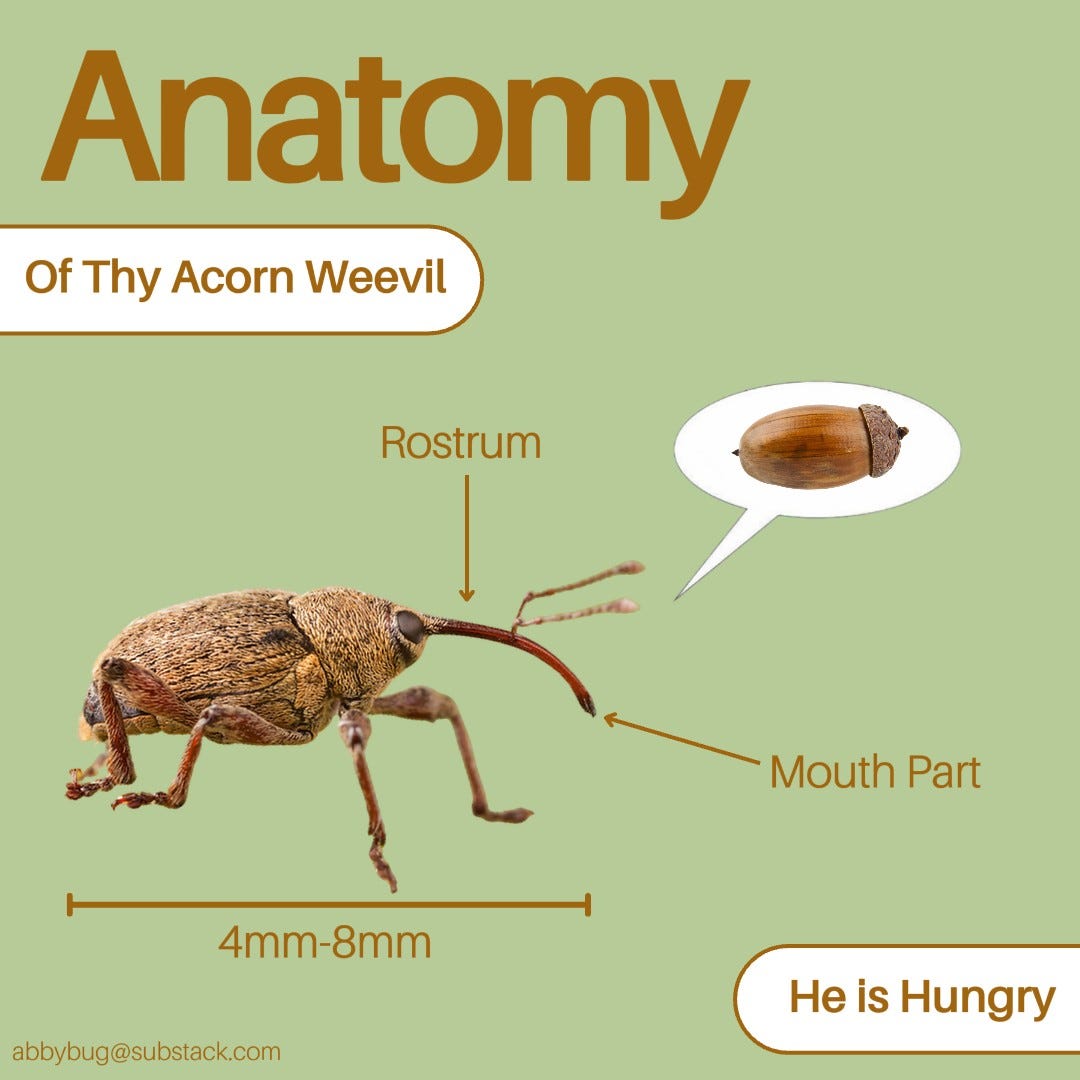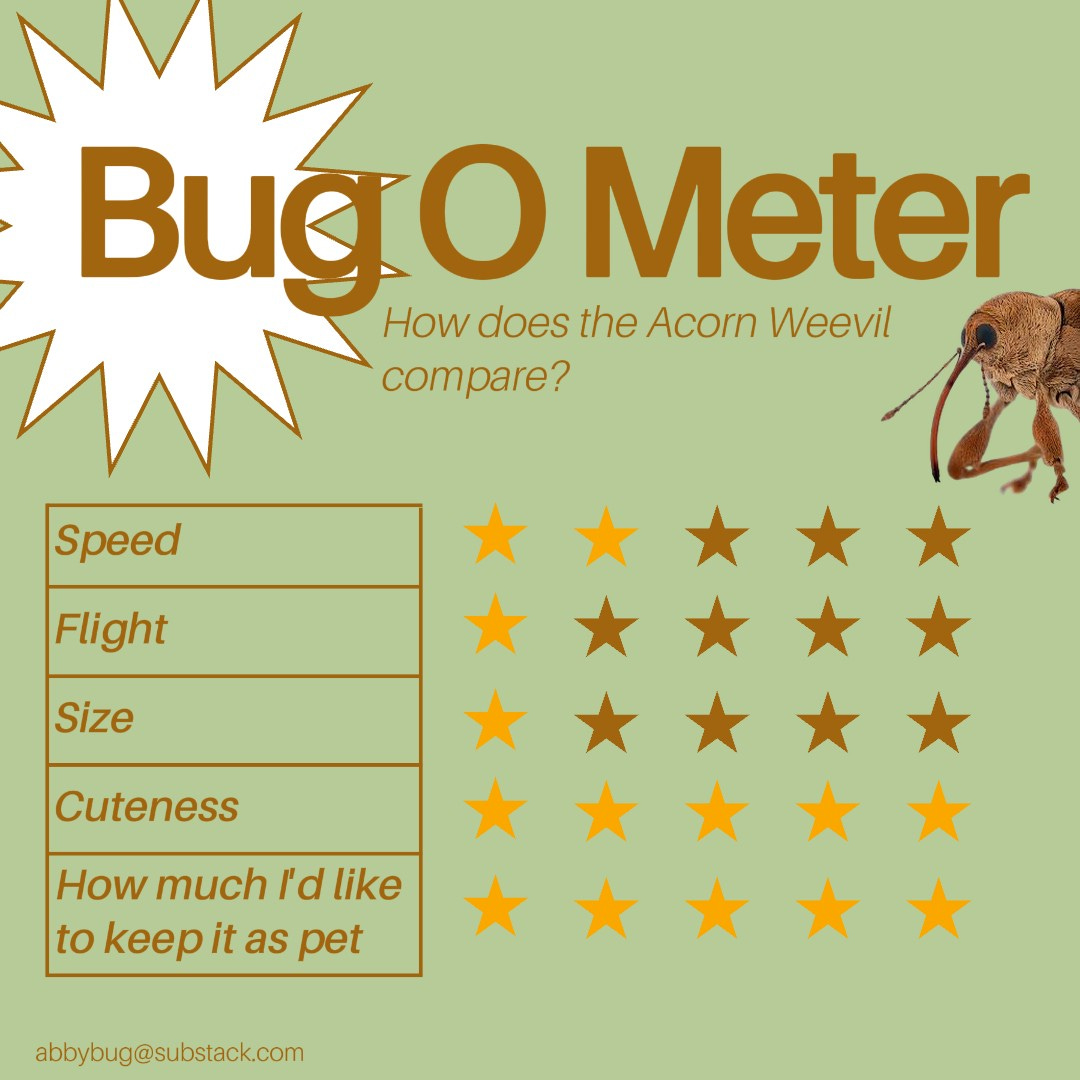Bug of the Week Vol.1- Acorn Weevil
26 March 24
Introducing the tiny, long snouted critter, the acorn weevil. Scientifically known as the “Curculio Glandium”, these carpophagus (fruit eating) bugs are more than what meets the eye. There are approximately 97,000 species of weevils known to man, making them one of the largest families of beetles.
Physical Description
Adult acorn weevils range from a tiny 4mm to 8mm in length, with an elongated snout known as a “rostrum”. Although many species of weevils don’t have wings, the acorn weevil is blessed with the ability to take flight. Their bodies are brown and patterned, with one major distinction between male and female acorn weevils. Female acorn weevils have much larger rostrums than males, which can grow up to twice the size of their body. Defying gender norms is what the female acorn weevil does best. Located the end of the rostrum on female weevils is their mouth, which is utilised in a unique way.
Life cycle
Female acorn weevils use their long rostrum to drill into the centre of acorns, creating a narrow hole to then lay eggs in by using an ovipositor (a tube shaped organ). The eggs are heavily protected from parasites and predators by the acorn, until the larvae are ready to feed on the acorn to make their way out.
Location
These weevils are most commonly found in Northern Europe, America, South Britain, though populations have been found in many other countries due to their high infestation rate. They live within ecosystems with many oak trees.
Environmental Concerns
Although these fellows are adorable and look like a mix between an elephant and a bug, they do impose threats to the environment. Acorn-bearing trees are at high risk of damage, as larvae consume almost all of the internal contents of acorns when hatching, causing them to be incapable of germination. This slows seed production, as well as lowering sources of food for other wildlife. I forgive them because of how cute they are.




